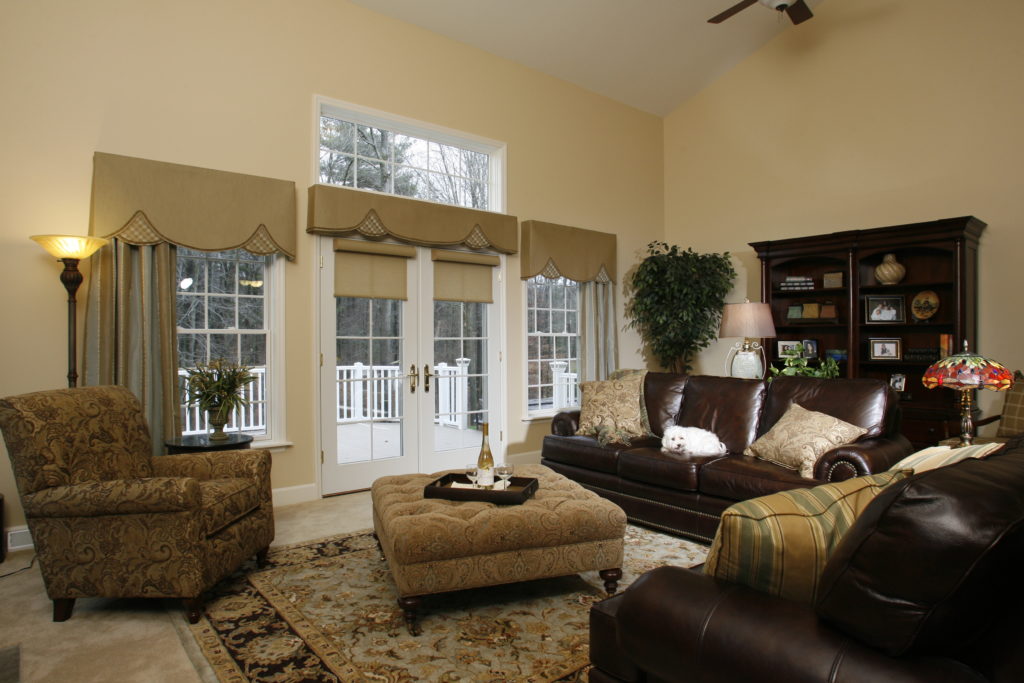Window treatments are an essential part of domestic life, whether they’re blocking the early morning sun from your bedroom window, providing you with much‐needed privacy or reducing energy loss from your home. There’s quite a long history attached to them: Curtains and window treatments originated as a temperature‐control technique, with the earliest curtains made from animal hides and hung in doorways on hooks. As textile innovations have progressed, the category of window treatments has expanded to include blinds, shades, shutters and other designs to control light and temperature in your house. While window treatments are essentially about form, function and style, there are many dynamic and innovative takes on traditional window treatments evolving in the exciting new design landscape.
Among the myriad trends seen throughout the home decor industry, technology is a big one and its impact on design has been staggering. When it comes to window treatments, this growth includes a 21st‐century approach to the age‐old mechanisms traditionally employed. As home automation grows in popularity, it is naturally evolving to include home design products. Automation for home furnishings is all about ease of use, and with motorized curtains and shades, remote‐controlled window treatments and cutting‐edge techniques such as digital printing, the world of home window products is rapidly advancing. In a market that has long been static, with the same designs for curtains and blinds for decades, high‐tech innovations are quickly making waves.
“Home security, energy efficiency and child safety are all improved by allowing you to control your window treatments from a remote mobile device or your smart home assistant,” says Lynn Corrigan, owner of East Greenbush Window Coverings in Latham. Remote‐ or app‐controlled window treatments are growing in popularity due to an increasing emphasis from consumers on efficiency and convenience. When using a remote or app to adjust window treatments, regulating the amount of light in a room becomes as simple as switching a light on or off.
Forward‐looking innovations to window treatments have additional advantages such as reducing wear and tear, and cordless solutions are safer for pets and children. “We expect the benefits of cordless shades to continue to appeal to customers that are seeking a sleek appearance and child safety,” says John Fitzgerald, executive vice president of Comfortex Corporation, a leading manufacturer and fabricator of custom window treatments founded in Maplewood, just outside Albany, in 1986. Comfortex offers several motorized options that incorporate rechargeable battery technology; the PowerTouch™ Rechargeable, which employs a wand with a button that lifts and lowers the shade; and the Simplicity Rechargeable Motorization, which is operated by a radio frequency remote, making it a more affordable option.

East Greenbush Window Coverings is also keeping up with the advancements in motorization for window treatments, offering add‐on motorization options for most of its window treatments. Designed to adjust how natural light will be dispersed throughout the home, the PowerView Pebble Remote is a new featured product from Hunter Douglas, a popular manufacturer for which East Greenbush Window Coverings is an authorized showcase dealer. The Pebble Remote is a true illustration of modern design, with its high‐tech controls and seamless ergonomic design that marries functionality with a sleek, stylish appearance.
The convergence of style and substance is an ongoing trend in home decor, especially when it comes to window treatments. “While people continue to use a variety of treatments for privacy and/or sun control, they are asking for more draperies and top treatments to add another layer of personality to their rooms,” says East Greenbush Window Coverings’ Corrigan. Adding personality to a home is no new phenomenon, but there are more options than ever for customizing the look of your windows. Comfortex’s Fitzgerald has taken note of this trend as well, introducing a patented manufacturing process called Production on Demand. “This state‐of‐the‐art technology uses digital printing, combined with production that generates less than half the waste of traditional manufacturing,” Fitzgerald says. “All colors and patterns are stored digitally and, just as the name suggests, shades are custom produced on demand.”

The customization trend allows homeowners and commercial customers alike to put a personal touch on every detail of an interior space. Gone are the days of limited options in a sea of white plastic blinds—today’s window treatment market is rife with options for everyone from professional designers to DIYers, all of whom can lend their creative vision to their window coverings. Corrigan explains that with the diverse looks and designs available now, today’s consumer is less likely to shy away from window coverings once thought of as purely utilitarian: “Shades have always been a practical solution that have had a resurgence over the last several years, but are now available in many fabrics, colors and prints to fit any style.she says”
Window treatments are essentially a practical necessity, but recent innovations in textiles, automation and design allow for greater creativity and freedom when choosing the distinct look one desires. At the rate that these innovations are being made, the future of window treatments is shaping up to be brighter, bolder and smarter than ever before.





